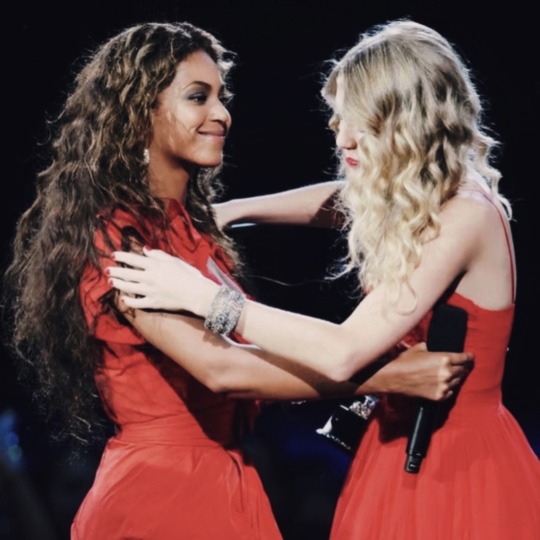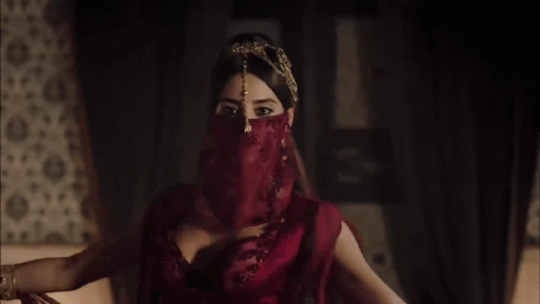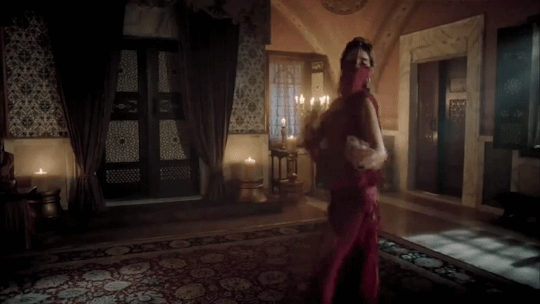#History of Women
Explore tagged Tumblr posts
Text
I said remember this feeling, I passed the pictures around.




When they gave us our trophies, and we held them up for our town.
#Taylor Swift#Swifties#Beyoncé#Beyonce#Bee Hive#Bey hive#Teyoncé#Cowboy Carter#Grammys#MTV#MTVs#The Tortured Poets Department#Speak Now#Long Live#full circle#women in music#music history#powerful moments to remember#lyrics in tags#Karma is a Queen#Time mystical time... Cuttin' me open then healin' me fine… Gave me the blues and then purple pink skies.#There goes the loudest women this town has ever seen. They had a marvelous time.#She had the envelope where you think she got it from?#We are the kings and the Queens.#You know you’ll always know me#We see you over there on the internet comparing all the girls who are killing it. But we figured you out we all know now we all got crowns.#What if I told you I’m the Mastermind?#We’re gonna be Timeless…#does it ever drive you crazy just how fast the night changes?#history of women
47 notes
·
View notes
Text

Thea is the fictitious name given to a female Homo sapiens skeleton found in the cave of San Teodoro (hence the name) in the territory of Acquedolci, province of Messina, in 1937.
The cave (measuring 60 meters in lenght, 20 meters wide, 10 to meters high) had been inhabitated since prehistoric times and had served throughout the ages as hideout from pirate raids, sheepfold and during World War Two as a repair from aerial bombing. It was first explored in 1859 by paleontologist and palethnologist Francesco Anca, baron of Mangalaviti. He uncovered remains of prehistoric mammals (dwarf elephants and horses, hyenas, bears, donkeys, deers) as well as flints and stone weapons, which made him determine the cave had been also inhabitated by ancient hunters. In the upcoming years, the cave kept being explored with many other animal fossils being unearthed. In 1937 the first human remains were found (in total 4 males and two females) and among them Thea's.
Her remains date back to Upper Paleolithic, between 14 to 11 thousands years ago and the moment of the discovery she was buried on the left side and covered with ochre. Apart from some missing ribs and her left hand, her skeleton is basically whole. Her sex was determined by the hip width and she might have been around 30 years old at the time of her death. Thea was 1.65m tall, with a long face and protruding lower jaw. Perfect teeth and bone structure along with the quality of her funerary equipment (she was found still wearing a necklace decorated with twelve pierced red deer's teeth) suggest she occupied a high status in her community (a noblewoman/princess or a priestess). It was speculated the cause of death might have been childbirth.
Thea's skeleton is currently preserved in Museo Gaetano Giorgio Gemmellaro, in Palermo. In 2007 a plastic model of her face was created in an attempt to give once again life to this Sicilian great-grandma.
Sources
Ambrusiano Eleonora, Thea, la prima donna siciliana – Acquedolci (ME)
Di Patti Carolina, THEA MADRE IL VOLTO DELLA PRIMA DONNA DI SICILIA E LA GROTTA DI SAN TEODORO
Grotta di San Teodoro: Sito Preistorico e Paleontologico di Sicilia
Il sito paleontologico e preistorico della grotta di “San Teodoro”
Il volto di Thea, donna siciliana nel Paleolitico
Thea, la principessa preistorica siciliana
#historicwomendaily#history#women in history#history of women#sicily#thea#prehistoric sicily#acquedolci#province of messina#people of sicily#women of sicily#myedit#historyedit
21 notes
·
View notes
Text






#history#magnificent century#muhteşem yüzyıl#ottoman#firuze hatun#Firuze#belly dancer#Dancer#ottoman harem#harem women#history of women
210 notes
·
View notes
Text

In this performance piece, Eliza Bennett embroidered the palm of her own hand using a needle and thread, stitching into her skin to mimic the appearance of rough, calloused labor. By using her body as both medium and message, she subverts traditional notions of embroidery—an art form historically associated with femininity and delicacy—by turning it into a painful, physical act of endurance.
The work highlights the invisible labor of women, especially in domestic or caregiving roles, and makes that effort viscerally visible through the act of self-inflicted stitching. It’s both tender and unsettling—an intimate protest against the undervaluing of “women’s work.”
Source: Contemporary100.com
#women artists#feminism#eliza bennett#contemporary art#women's rights#domestic labor#morbid musings#history of women#embroidery#sewing#delicate
8 notes
·
View notes
Text
In Defense of Women with Margaret L. King
One of the favourite pastimes of certain thinkers throughout history has been to demonstrate the supposed inferiority of women, something both modern people and people of the past have resisted with spicy arguments of their own. These days, we tend to use science and statistics to help us lend weight to our positions. But what did people lean on in the past? This week on The Medieval Podcast, Danièle speaks with Margaret L. King about Renaissance man Pompeo Colonna, why he’s writing in defense of women, and how he crafts his argument.
12 notes
·
View notes
Text
When there are gaps in knowledge, the vacuum can be filled with myth, especially in reference to a woman, and an unusual woman at that.
Patricia Pierce, Jurassic Mary
63 notes
·
View notes
Text

"What the War Left Behind brings together oral histories of women from a range of political affiliations, socioeconomic classes, and religious identities. These histories present an alternative image of women during war, highlighting the actions of those who sought to make life better for themselves and their neighbors during conflict. By centering women’s voices in the war, Abisaab and Hartman present a new perspective on an oft-discussed historical era, demonstrating the power of resistance during difficult times. These translated texts showcase the active roles women take during wartime and how women’s political efforts are an essential part of Lebanese history."
12 notes
·
View notes
Text

Pat Banks Edmiston
Patricia Noisette Banks Edmiston (born April 27, 1937) is an American who was one of the first Black flight attendants. She combated discriminatory practices in the United States by initiating a legal action against Capital Airlines (merged into United Airlines in 1961) via the New York State Commission Against Discrimination. She won the case which lead to the start of more airlines employing Black women. via W
The struggle for equal opportunity in the airline industry was turbulent—but one Black woman’s challenge opened the doors for change. Learn how Pat Banks Edmiston broke barriers in the sky and paved the way for those who came after her.
youtube
see also:
Breaking Barriers in the Sky
The First African American Flight Attendants
#Patricia Noisette Banks Edmiston#the first Black flight attendants#herstory#women#civil rights#black herstory#black women#history of women#Pat Banks Edmiston#Youtube
3 notes
·
View notes
Text

Sculpture of suffragists Sojourner Truth, Susan B. Anthony and Elizabeth Cady Stanton
Let's read: Why the First Monument of Real Women in Central Park Matters—and Why It’s Controversial
https://www.smithsonianmag.com/smart-news/monument-controversy-women-pioneer-central-park-180975662/
(2020 reminder) Today, New York City welcomed a public artwork honoring three suffragists. But some scholars argue that the statue obscures more than it celebrates | Photo by Spencer Platt / Getty Images
4 notes
·
View notes
Text

John Stuart Mill appears to be the first Western philosopher to seriously think about women’s rights and have the courage to actually take action about it. Hundreds of years of milquetoast “remember the ladies” types and here he comes saying we change “men” to “persons” (! Something many people won’t do now) and demanding women’s suffrage in the House of Commons.

It is vindicating and maddening to read the same arguments feminists make today be made by a man two centuries ago. He’s clearly saying that men sexually prefer women who are “meek” and “submissive”. That men incentivize women subjugating and repressing themselves to attract husbands. In the full quote, he clearly points out how female dependency on men turns women’s whole world and interest on attracting and keeping a man, to the women’s detriment (and men’s gain ):
When we put together three things – first, the natural attraction between opposite sexes; secondly, the wife's entire dependence on the husband, every privilege or pleasure she has being either his gift, or depending entirely on his will; and lastly, that the principal object of human pursuit, consideration, and all objects of social ambition, can in general be sought or obtained by her only through him, it would be a miracle if the object of being attractive to men had not become the polar star of feminine education and formation of character. And, this great means of influence over the minds of women having been acquired, an instinct of selfishness made men avail themselves of it to the utmost as a means of holding women in subjection, by representing to them meekness, submissiveness, and resignation of all individual will into the hands of a man, as an essential part of sexual attractiveness.
Sometimes I wonder if there are no new feminist arguments and we actually have just been saying the same shit for years. Like, it seems men know what they’re doing, what they gain from it; most just don’t seem to care or are too afraid to give serious thought to the question of family reform. Or even worse - women no longer being hot to them.
#feminism#radical feminism#commentary#history of women#I love it when men are like. have you noticed were oppressing women? we should stop that#like feminists have been saying it for ages but it’s funny to hear it from the horses mouth
23 notes
·
View notes
Text
okay but if you ever see a male creative who had a string of great work and then everything else he did was dogshit, go to the "personal life" part of his wikipedia and look at his relationships. you'll either find a major tragedy he didn't recover from (completely understandable) or, more likely, there was a woman in his life doing uncredited shit editing his stuff or contributing generally and she's not there anymore.
I told a friend about this phenomenon in literature and he called me weeks later like, I remembered what you said about women doing uncredited work when tim burton came up. he made a string of bangers then everything else just was nowhere near as good. the timeline matches perfectly to when he was with this german visual artist (lena gieseke). he's done some good work in collaboration, but if things were dug into I suspect we would find she did a lot more than people realise.
so yeah whenever you look around like wow women didn't work in history, or, women aren't auteurs, or, there just aren't as many great female writers - societal reasons for that aside, half the time they absolutely did.
76K notes
·
View notes
Text

Costanza Bruno was born in Siracusa on January 31, 1915, to Brigadier General Francesco Bruno, (later a decorated WWI veteran), and Concettina Salomone of the Barons of Nicosia. The eldest of three children (she would be joined by Carmelina, 1919-2009, and Bruno, 1922-2013), Costanza grew up in a wealthy and cultured environment, fluent in several languages and well-versed in poetry. Her character was marked by obedience, generosity, and compassion, traits she demonstrated by caring for her ailing mother and sister, and assisting those in need.
Coming from a wealthy family, Costanza was cultured, could speak several languages and was well versed in poetry. Obedient, generous and caring, she spent her youth taking care of her ailing mother and sister as well as helping people in need.
At the age of 20, Costanza volunteered as a Red Cross nurse, serving in hospitals in Palermo, Catania, and Siracusa. Her dedication to the injured soldiers, both physically and spiritually, earned her the affectionate nickname "little fairy."
With the outbreak of WWII, the Bruno family relocated to the Salomone family palace in Nicosia for safety. Costanza continued her service at the town's poorly equipped military hospital.
On July 22, 1943, during an intense air raid, the hospital was struck. Volunteer nurse Maria Cirino was killed instantly, and Costanza suffered severe injuries: a bullet wound to her left hand, shrapnel wounds to her side, and a bullet to her temple. Despite these critical injuries, Costanza initially concealed their severity, urging the doctor she was assisting to continue treating the wounded.
When her father arrived, her condition was clearly grave. She was rushed to a nearby military ambulatory, where three of her left fingers were amputated. Throughout this ordeal, Costanza remained stoic, uttering no complaints. She was then transported to Mistretta's field hospital, arriving late at night. Unfortunately, no surgeon was available for a life-saving operation.
Her father, realizing the futility of further medical intervention, decided to bring her back to her grandparents' home in Nicosia, allowing her to spend her final hours surrounded by family. Costanza died the following day, July 23, 1943.
Initially buried in Nicosia's graveyard, her remains were later moved to Siracusa in 1948, entombed in the Church of San Tommaso al Pantheon, a shrine for Syracusan soldiers fallen in WWI. She is the only woman buried there.
Costanza Bruno's extraordinary service and sacrifice were posthumously recognized in 1947 with the Florence Nightingale Medal, the Italian Red Cross Golden Medal, and the Bronze Medal for Military Valor.
Sources
GALIZIA MARIA,Costanza Bruno
Nicosia, ricorre il 22 luglio 2023 l’ottantesimo anniversario delle crocerossine Costanza Bruno e Maria Cirino
RIZZO ESTER, Costanza Bruno Siracusa 1915 - Nicosia 1943
#history#women#historical women#historicwomendaily#history of women#costanza bruno#siracusa#nicosia#contemporary sicily#ww2#province of enna#province of siracusa#people of sicily#women of sicily#myedit#historyedit
7 notes
·
View notes
Text






#history#queen nefertari#reina nefertari#nefertari#queen of egypt#egyptian woman#egyptian#ancient egypt#camila rodrigues#moises e os dez mandamentos#moises y los diez mandamientos#egypt queen#ancient women#history of women#women in history
24 notes
·
View notes
Text
tags by @finelythreadedsky:
#y'all read sophocles fr. 583 (procne in tereus) #we have... quite a lot of things written by men in women's voices reflecting on the position of women in a patriarchal society #they're not like. necessarily progressive or feminist. #(often the women react to their social marginalization with extreme and misdirected violence as well as lucid speeches) #(at some point following that speech about the plight of women procne proceeds to kill her son and feed him to her husband) #and they were all written by men and performed by men in women's roles #but like. they absolutely were thinking about and trying to express the voices and silences of female characters #and i absolutely do think that sophocles in particular was really interested in the silences/silencing of women! it's not just euripides #also heyyy peliades!!!
"Nobody gave a voice to these Greek Mythology female characters."
Euripides after writing Andromache, Andromeda, Antigone, Danaë, Electra, Hecuba, Helen, Iphigenia in Aulis, Iphigenia in Tauris, Medea, Merope, Wise Melanippe, Captive Melanippe, Peliades, The Phoenician Women, The Trojan Women etc.

4K notes
·
View notes
Text


“Mary Wallace was the first woman bus driver with the Chicago Transit Authority in 1974. Her job applications were rejected for three years, but her persistence paid off. She was eventually hired under an affirmative action program. Wallace became one of the city’s most popular drivers over her thirty-three year career.”
Happy Black History Month!
#Mary Wallace#black history month#black history#african american history#Chicago#american history#women’s history#history#historical figures
23K notes
·
View notes